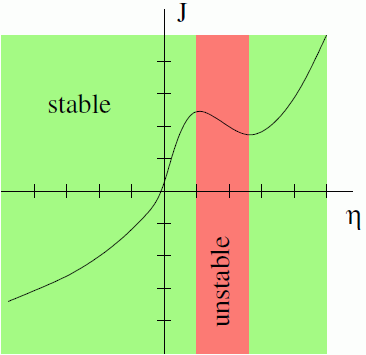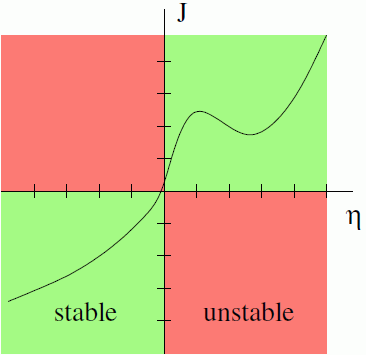Current-Voltage Characteristic Reference
This section provides details of the properties of the Current Voltage Characteristic node and sub-nodes.
Current Voltage Characteristic Properties
- Method
-
- Butler-Volmer: Uses the Butler-Volmer equation to specify the relation between the specific electric current, , and the overpotential, . See Eqn. (4296).
- Tabular Polarization Curve: Allows you to model arbitrary shaped current-potential curves. It uses tabular data to specify the relationship between the specific electric current, , and the potential drop across the boundary or interface, . and are defined as in Eqn. (4295). The data in the table must represent mathematical functions of electric potential or specific electric current—depending on the option that is selected for table sorting.
- Anodic Transfer Coefficient
- The anodic apparent transfer coefficient in Eqn. (4296). This property appears only when the Method is set to Butler-Volmer.
- Cathodic Transfer Coefficient
- The cathodic apparent transfer coefficient in Eqn. (4296). This property appears only when the Method is set to Butler-Volmer.
- Specific Exchange Current
- This value represents the specific electric exchange current in Eqn. (4296). This property appears only when the Method is set to Butler-Volmer.
- Zero Electric Current Potential
- This value specifies the electric potential drop when there is zero current. The zero electric current potential, in Eqn. (4296). This property appears only when the Method is set to Butler-Volmer.
Tabular Polarization Curve Properties
- Table
- Allows you to select the appropriate imported polarization curve file table. This table provides pairs of potential drop (
) and current values. The table must contain more than two pairs of values.
Note The polarization curve is an essential part of the simulation and should be specified with care. To enhance convergence of sufficiently complex polarization curves it can help to decrease the under-relaxation parameter of the electric potential solver. - Electric Potential
- The column of the table that specifies the electrical potential drop.
- Specific Electric Current
- The column of the table that specifies the specific current density.
- Zero Electric Current Potential
- The zero current potential drop in Eqn. (4296) specifies the electric potential drop when there is zero current. The value is extracted from the imported file table and is defined by interpolating the condition
Table Sorting Properties
The
node provides the following properties:
- Option
- Allows you to specify how the tabular polarization curve data is sorted upon import to
Simcenter STAR-CCM+.
- Electric Potential: Sorts the tabular polarization curve data in order of mathematically ascending values of electric potential. The following diagram shows stable and unstable domains of the current-voltage curve when Electric Potential Table Sorting is selected.
Note Instability can occur for negative slopes of the current-voltage curve. 
- Specific Electric Current: Sorts the tabular polarization curve data in order of mathematically ascending values of specific electric current. The following diagram shows stable and unstable domains of the current-voltage curve when the table sorting option is set to Specific Electric Current. The current-voltage curve cannot feature a non-zero electric potential when specific electric current is zero.
Note Instability can occur in the second and fourth quadrants of the current-voltage curve. 
This feature is useful when the current voltage characteristics represent a non-monotonic mathematical function of specific electric current—such as in some plasma applications.Note This option is not available when using the Electrochemical Reactions model.
- Electric Potential: Sorts the tabular polarization curve data in order of mathematically ascending values of electric potential. The following diagram shows stable and unstable domains of the current-voltage curve when Electric Potential Table Sorting is selected.